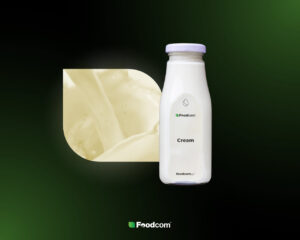- Dairy prices are climbing due to increased demand and supply chain challenges, with key products like Skimmed Milk Powder and Cheese seeing sharp rises.
- The EU-New Zealand free trade agreement initiated this May aims to enhance New Zealand’s dairy exports by reducing tariffs and increasing quotas.
- North America faces an avian flu outbreak in dairy cattle, though the public health risk remains low due to strict pasteurization standards.
Hello Partners!
Welcome back to our Newsletter!
The dairy sector is facing a wave of price hikes due to heightened demand and supply chain challenges. Key products including Skimmed Milk Powder, Cheeses, Butter, and Cream are all witnessing considerable increases. These trends emphasize the critical role of strategic planning in leveraging market opportunities.
Let’s take a look at what else is happening in the dairy market!
Products of the Week
Skimmed Milk Powder
The market for Skimmed Milk Powder is showing signs of firming, with current transactions stabilizing around 2550 EUR/MT. This trend is due to a drop in production in key regions, which has prompted buyers to stock up ahead of a further decline. Recent trading activity reflects a market reaction to these supply concerns, and signals a cautious but rising price movement. In particular, prices for SMP, which is destined for use as animal feed in the coming third quarter, are approaching the 2500 EUR/MT mark.
Cheese
The cheese market continues its upward trend as prices for Gouda and Edam maintain their high level. The shortage of global milk supplies has prompted buyers to act quickly to secure the necessary stocks, which is having an impact on the sustained price level in view of falling milk production. In addition, demand for Mozzarella has escalated with prices exceeding 4000 EUR/MT. Prices for Cagliata have also risen, reflecting the general trend of rising prices for various cheeses due to the short supply.
Fats
Butter prices have risen significantly and are now stabilizing at around 6750 EUR/MT. This increase is largely due to the lower volumes of milk available for butter production, which has led to increased market activity and price volatility. The trend suggests that prices could continue to rise as supply remains limited and demand remains strong.
Anhydrous Milk Fat (AMF) and butter oil are closely following the upward trajectory of butter, with prices for these products also seeing notable increases in recent weeks.
Liquids
The market for Cream has picked up significantly and current prices are between 7700 and 7800 EUR/MT, reflecting the strong market development. Demand for high-quality dairy products remains robust and is contributing to the rising price forecasts, which suggest a price of over 8300 EUR/MT in the coming quarters.
The prices for Skimmed Milk Concentrate have risen and have reached a level between 2100 and 2250 EUR/MT. This price increase is a result of the growing interest in high-quality dairy products.
Spot Milk prices are rising due to a steady decline in milk production across various countries, a trend that occurred earlier than expected, causing a supply shortage. This situation has improved financial prospects for milk producers. Additionally, major dairies have been increasing milk payouts to farmers for the last two to three months, reflecting strong demand and tight supply conditions.
Whey powders
Prices for Sweet Whey Powder for the animal feed industry in the Netherlands are quoted at around 780 EUR/MT for the coming quarter. Currently, there is a noticeable reduction in the availability of raw materials, which has prompted producers to hold back on sales, awaiting more favorable market conditions to maximize returns.
The market for Whole Milk Powder is following the general upward trend for dairy products, with prices rising steadily. The reduced supply from large producers such as New Zealand, whose milk production season is coming to an end, is contributing to this upward pressure on prices and keeping the market stable.
What else?
Oceania
The new free trade agreement between the EUand New Zealand, which came into force on May 1, 2024, represents a significant step forward for New Zealand’s dairy exports to the EU. Initially, the agreement will eliminate tariffs on 91% of New Zealand’s exports, a figure that is set to increase to 97% over the next seven years. For dairy products such as butter, cheese and milk powder, quotas will be increased and tariffs reduced, although some restrictions will remain. The reduced tariffs are expected to save New Zealand exporters around NZ$100 million a year, which promises to boost the country’s export activity.
North America
With concerns growing over avian flu in US dairy cattle, experts are hoping that rising summer temperatures could slow the spread of the virus. This is the second confirmed case of human infection with the influenza A(H5) virus resulting from contact with infected cattle. The disease has affected livestock in nine states and 52 herds, which has led to increased biosecurity measures. Although the risk to the public is considered low, dairy farmers are advised to follow strict safety protocols, including the use of personal protective equipment and testing of animals, especially prior to interstate transportation. Despite the threat, commercial milk remains safe due to the pasteurization process that inactivates the virus.
![DAIRY MARKET SURGE: riding the wave of sky-high prices! [220th Edition of Foodcom DAIRY Newsletter] DAIRY MARKET SURGE: riding the wave of sky-high prices! [220th Edition of Foodcom DAIRY Newsletter]](https://foodcom.pl/wp-content/uploads/2024/05/Foodcom_SA_Dairy_Newsletter_1-1520x760.jpg)


![Milk and fat prices down, whey exports up – analysis of the week [264th Edition of DAIRY Bulletin] Milk and fat prices down, whey exports up – analysis of the week [264th Edition of DAIRY Bulletin]](https://foodcom.pl/wp-content/uploads/2023/08/Foodcom_SA_Dairy_Newsletter-600x300.jpg)
![Soybean market overview [Global Report] Soybean market overview [Global Report]](https://foodcom.pl/wp-content/uploads/2025/10/global-report-butte-blogr-600x300.png)
![Cocoa harvest forecasts in Côte d’Ivoire point to stable crop growth [World News] Cocoa harvest forecasts in Côte d’Ivoire point to stable crop growth [World News]](https://foodcom.pl/wp-content/uploads/2025/03/News-world_7-600x300.png)

